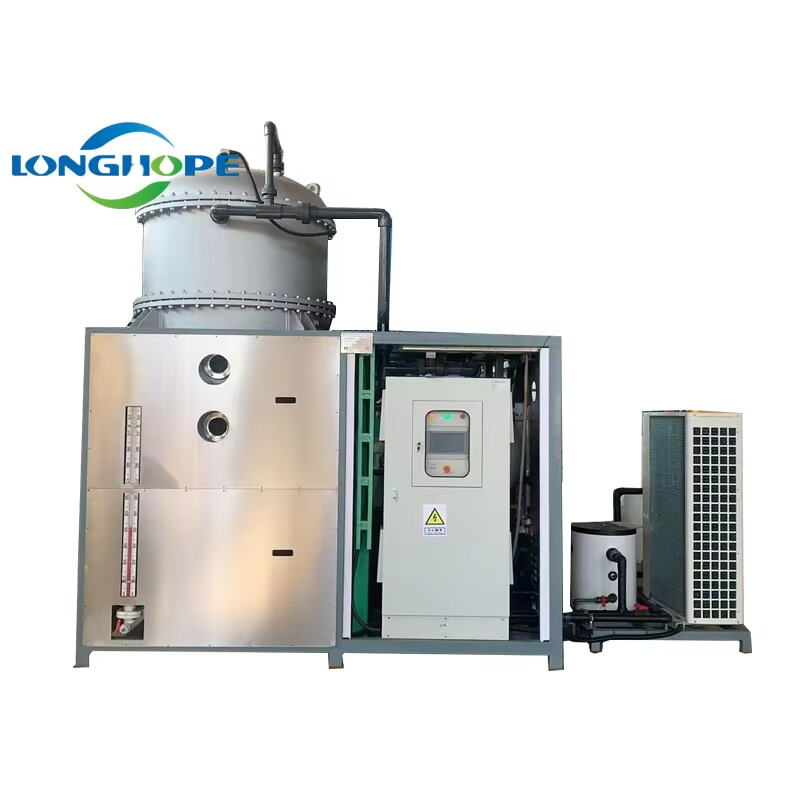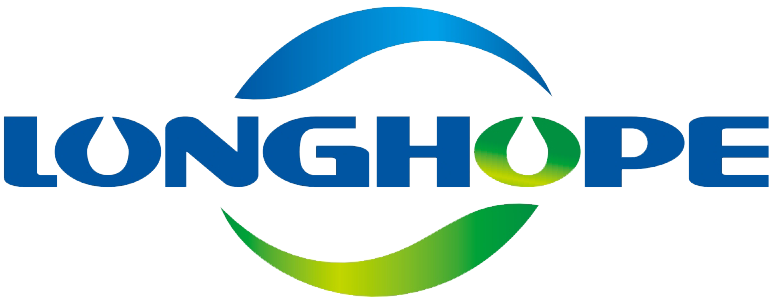The Critical Role of Advanced Evaporators and Crystallizers in Industrial Wastewater Treatment
How Advanced Evaporators Maximize Water Recovery
In industrial wastewater treatment, advanced evaporators are really making a difference when it comes to getting the most water back out of waste streams. These systems work by heating up the wastewater until the water turns into vapor, which means companies can reclaim and reuse around 90% of their water supply. For manufacturers, this cuts down on fresh water costs while ticking boxes for environmental compliance standards. Many facilities have started adopting methods like multi-stage flash evaporation combined with thermal compression technology. While these approaches require careful engineering, they do manage to slash the amount of liquid waste that needs disposal, sometimes cutting volumes by half or more depending on the process parameters.
Food processing plants and petrochemical facilities are seeing real advantages when they adopt modern tech solutions. Take advanced evaporator systems for example. These have cut down on waste disposal expenses while helping companies run things in a way that's better for the environment. We've seen this happen across multiple operations where businesses actually managed to tweak their production methods. One plant in particular saved thousands annually just by getting smarter about recovering water during their processes. The numbers speak for themselves in many industry reports, showing how these improvements aren't just theoretical but practical wins for manufacturers looking to stay competitive.
Crystallizers: Transforming Waste into Reusable Solids
Crystallizers play a really important role when it comes to turning those dissolved contaminants in wastewater into solid stuff that can actually be disposed of or reused for different industrial applications. What this means is that companies find it much simpler to get rid of waste materials or repurpose them elsewhere, which helps them stay within all those strict environmental rules they have to follow these days. These newer models of crystallizers come equipped with some pretty impressive tech advancements that make the final product better quality overall. As a result, many businesses aren't just meeting their environmental obligations anymore; some are actually going beyond what's required by current regulations thanks to these improvements.
The numbers tell a clear story about what crystallizers can do for resource recovery, showing some facilities cutting down on dangerous waste by as much as 80 percent. Such a drop really highlights why these systems matter so much for green initiatives while at the same time helping companies get more value out of their materials. With businesses everywhere trying to shrink their carbon footprints, crystallizer technology keeps moving into the spotlight as one of those key tools that makes sense both environmentally and financially when dealing with industrial waste problems.
Key Challenges in Modern Industrial Wastewater Treatment
Scaling and Fouling in Reverse Osmosis Systems
A big headache in industrial wastewater treatment comes from scaling and fouling issues within reverse osmosis systems. When these problems occur, they really mess with how well the systems work, which means more money spent on maintenance and sometimes even complete system breakdowns. According to various research papers out there, roughly half of all RO failures actually stem from scaling problems alone. That makes it pretty clear why good pretreatment methods are so important. Getting down to the nitty gritty of what causes scaling helps engineers build better treatment plants that avoid these headaches altogether. Proper chemical pretreatment isn't just nice to have either it significantly extends membrane life spans, making the whole operation run smoother while cutting down on those pesky operating expenses over time.
High Energy Consumption and Operating Pressures
High energy demands from running industrial wastewater treatment systems at elevated pressures remain a major headache for operators across the board, affecting everything from monthly bills to overall system performance. A lot of plants still rely on outdated equipment that guzzles electricity rather than conserving it efficiently. The good news? New solutions like low pressure membrane technology are starting to gain traction in the market. These systems keep treatment standards intact while cutting down on power consumption significantly. According to recent studies, companies that focus on energy optimization can see their operating expenses drop around 30 percent over time. That's why forward thinking facility managers are now making energy efficiency a top priority during system upgrades. Looking ahead, businesses embracing these greener alternatives will discover two main benefits: reduced bottom line costs and improved environmental credentials, which matters increasingly in today's regulatory landscape.

The Rise of Zero Liquid Discharge (ZLD) Systems
Regulatory Drivers for PFAS Contamination Mitigation
The tightening rules around PFAS contamination is really driving industries to adopt Zero Liquid Discharge (ZLD) systems these days. These stubborn chemicals stick around forever because they don't break down easily, which makes them tough on conventional wastewater treatments. As governments roll out new policies and communities get louder about clean water, businesses find themselves scrambling to install ZLD solutions to protect our shared water sources and keep people healthy. Look at what's happening across America right now - more than forty states have already stepped up their game with harsher PFAS regulations. Companies facing these requirements turn to cutting edge wastewater tech like ZLD systems that actually remove those pesky chemicals from factory runoff before anything goes back into the environment. The result? Less toxic waste ending up where it shouldn't be.
Synergy Between Evaporators and Crystallizers in ZLD
When evaporators work together with crystallizers inside ZLD systems, companies get real benefits for their bottom line while cutting down on waste. What happens is pretty straightforward actually the system takes whatever's left after processing and turns it into something useful again, which means less stuff going to landfills. The process starts by getting rid of all the water first, then what remains gets transformed into solid material that can be reused elsewhere. Factories that have implemented this kind of setup often see around 90% less water consumption and dramatically reduced waste output compared to traditional methods. Looking at how plants across manufacturing sectors are seeing results, it's clear why more businesses are turning to ZLD tech as they try to meet stricter environmental regulations without breaking their budgets.
Benefits of Optimized Industrial Wastewater Treatment Systems
Cost-Effective Resource Recovery and Reuse
When wastewater treatment systems are optimized, they actually cut down costs quite a bit because companies can get back some really valuable stuff from their waste streams. Facilities using these kinds of systems often find themselves grabbing back raw materials instead of buying new ones all the time, which means less money spent on outside suppliers plus lower fees for getting rid of waste. Some studies show that factories implementing resource recovery methods might see around half their operating expenses disappear. These kinds of savings make the whole investment worth it for many businesses looking to go green while still keeping their bottom line healthy. Companies interested in sustainable options should check out what Wuxi Longhope Environmental has to offer regarding resource recovery equipment. Their low temperature heat pump evaporators and crystallizer machines represent some pretty effective tools for making sure no valuable material goes to waste.
Reducing Environmental Impact Through Advanced Technologies
Bringing advanced tech into wastewater treatment cuts down on the environmental impact of industrial work quite a bit. New systems allow for much better control when removing pollutants, making the water that gets discharged way cleaner than before. Some studies show improvements around 95% in certain cases. Cleaner output means factories can meet those tough environmental rules without breaking a sweat, plus people start seeing them as more responsible businesses. Going green with treatment isn't just good for the planet either. Companies that invest in these methods tend to build stronger reputations as socially conscious organizations. Take Wuxi Longhope Environmental for instance. They've been developing some pretty impressive wastewater solutions lately. Their crystallizer and evaporator systems are worth looking into if someone wants to upgrade their facility while reducing their ecological footprint.
Future Trends in Industrial Wastewater Management
Smart Automation in Evaporator and Crystallizer Operations
Automation is changing how industries handle wastewater management, especially when it comes to running evaporators and crystallizers more efficiently. With smart systems now in place, operators can monitor and adjust wastewater treatment processes as they happen, which makes the whole operation run smoother than before. The benefits don't stop there either. Predictive maintenance features help catch problems before they become major issues, while automated workflows keep things moving even when unexpected events occur. These improvements cut down on equipment downtime and save money on labor costs over time. Internet of Things technology is making its way into these systems too, connecting various components so they work together better. This kind of tech integration doesn't just boost operational efficiency; it actually supports broader environmental goals that many companies are striving to meet these days.
Sustainability Goals Driving Innovation in ZLD
Sustainability concerns are really pushing forward the adoption of zero liquid discharge (ZLD) systems across various sectors. Many manufacturing firms have started allocating budgets for ZLD implementations as governments tighten water pollution laws. Recent advancements in these wastewater treatment methods focus on cutting down power usage while recovering valuable materials from waste streams, something that fits well with international climate targets. Market analysts point to substantial investment increases in this area, expecting around 25% growth within five years give or take depending on regional factors. What we're seeing now isn't just greenwashing talk but actual factory floor changes where companies integrate ZLD tech not only to comply with regulations but also because it makes business sense in the long run when considering both operational costs and brand reputation.
FAQ
What are the main benefits of using advanced evaporators in wastewater treatment?
Advanced evaporators maximize water recovery, reduce liquid waste, lower waste disposal costs, and align with sustainability goals.
How do crystallizers contribute to wastewater management?
Crystallizers convert dissolved contaminants into solid by-products, making disposal easier and supporting compliance with environmental regulations.
What challenges exist in the industrial wastewater treatment process?
Key challenges include scaling and fouling in reverse osmosis systems and high energy consumption associated with wastewater treatment operations.
Why are Zero Liquid Discharge (ZLD) systems gaining popularity?
ZLD systems are adopted due to regulatory pressures on PFAS contamination and their effectiveness in water and waste reduction, supporting environmental sustainability.
Table of Contents
- The Critical Role of Advanced Evaporators and Crystallizers in Industrial Wastewater Treatment
- Key Challenges in Modern Industrial Wastewater Treatment
- The Rise of Zero Liquid Discharge (ZLD) Systems
- Benefits of Optimized Industrial Wastewater Treatment Systems
- Future Trends in Industrial Wastewater Management
- FAQ

